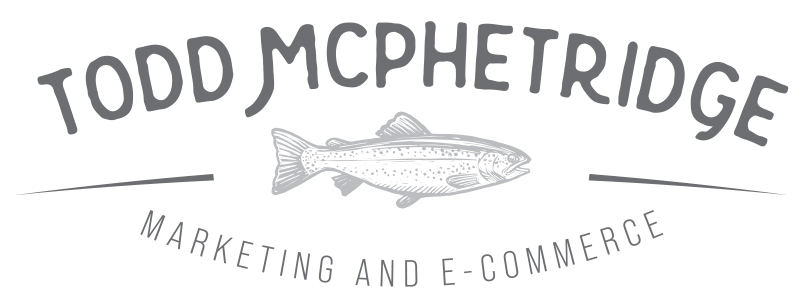Return on ad spend declines for many reasons that do not announce themselves. Creative fatigue sets in quietly. Audiences saturate. Tracking drifts. Offers lose their sharpness. When these frictions stack, your paid social machine spends more to win the same sale. This roadmap gives DTC brands a disciplined plan to locate the leaks, repair the system, and restore dependable ROAS inside one quarter.
The approach follows five motions that a Marketing Consultant can lead with speed and clarity: diagnose, plan, execute, measure, and iterate. Each motion includes specific deliverables, decision rules, and checkpoints that protect the budget from waste.
Why ROAS Slips and What It Costs
- Creative exhaustion: repeated angles and static formats reduce thumb-stop rate and raise CPMs.
- Audience drift: lookalike seeds grow stale and broad targeting bends toward low intent inventory.
- Offer erosion: weak price framing and missing risk reducers depress click-through and checkout rate.
- Data gaps: poor UTM hygiene and inconsistent server signals cloud attribution and block learning.
- Landing friction: slow pages, vague proof, and unclear delivery terms lower conversion and hide intent.
Left alone, a small decline compounds. A ten percent drop in click-through, paired with a small rise in CPC, can halve ROAS on the same budget. The cure is not a louder discount. The cure is a system that turns qualified attention into profit with fewer steps and fewer surprises.
The Operating Model
Think of paid social as one engine powered by three flywheels that strengthen each other:
- Capture: creative that matches buying jobs and directs traffic to specific outcomes.
- Convert: pages and offers that remove doubt and show value per dollar and per use.
- Compound: lifecycle programs that convert first orders into repeat revenue and referrals.
The roadmap below assigns clear owners, time boxes, and ROAS guardrails so leadership can move dollars with confidence.
Diagnose: Find the Leaks in Two Weeks
Run a compact audit that produces a one-page decision brief.
- Account structure: campaigns by objective, budget distribution, learning phase stability, and creative testing lanes.
- Creative library: hooks, formats, and proof types mapped to the top buying triggers for each product tier.
- Audiences: performance by prospecting versus remarketing, recency windows, and overlap.
- Attribution bedrock: UTM conventions, post-purchase survey coverage, server-side signals, and a daily sanity check between platform and analytics.
- Landing experience: speed, above-the-fold trust, offer clarity, delivery windows, and return terms.
Deliverable: a leak map with estimated impact and the smallest tests that can verify the fix within seven to ten days.
Plan: Set Guardrails and Targets
Good plans reduce indecision. Write the rules down before you touch spend.
- Guardrails: minimum first-order ROAS by product tier, maximum CAC by campaign family, and a weekly stop-loss that pauses any asset below threshold after a fixed impression count.
- Targets for 90 days: blended ROAS plus 20 percent, cost per add-to-cart minus 15 percent, click-through rate plus 25 percent on new pillars, and remarketing frequency capped at a level that preserves efficiency without fatigue.
Execute: Programs That Move ROAS
1) Creative Pillars
- Utility: show the problem, the product doing the job, and the measurable outcome.
- Social proof: testimonials, expert quotes, ratings, and before-after evidence with clear context.
- Lifestyle fit: scenes that place the product in the buyer’s day and remove guesswork about use.
- Founder credibility: a short origin clip or voiceover that frames standards and tradeoffs.
Build each pillar with three hooks, two formats per hook, and a version for short captions and long captions. Refresh on a two-week cadence without changing the brand spine.
2) Offer Architecture
- Create price justification blocks that explain materials, unit economics, cost per use, and maintenance.
- Use welcome incentives that trade value for email or SMS without training buyers to wait for deep discounts.
- Add smart add-ons at checkout that increase perceived value without harming contribution margin.
3) Landing Discipline
- Send traffic to intent-matched pages. A comparison angle goes to a comparison page. A problem-solution angle goes to a concise landing section with proof and a single CTA.
- Place a trust stack above the fold. Include review count, guarantees, delivery window, returns, and secure payment badges that are real.
- Cut widgets and popups that delay first contentful paint. Speed protects ROAS.
4) Audience Hygiene
- Rotate prospecting with a mix of broad and high-signal interest groups while keeping retargeting windows tight.
- Prune overlap weekly to avoid paying twice for the same person.
- Seed lookalikes with clean recent purchasers and high LTV cohorts rather than all customers.
5) Budget Flow
- Hold a protected test lane that spends a small fixed amount on new hooks and formats.
- Escalate winners only after they meet the guardrail for a defined impression and conversion count.
- Shift up to high intent when platform costs spike. Use search, shopping, and affiliates to stabilize revenue while creative resets run.
Measure: A Scorecard Leaders Can Read in Five Minutes
- Platform ROAS: revenue reported by the platform divided by spend, trended by creative pillar.
- Blended ROAS: attributed revenue in analytics divided by total paid social spend plus attributable production costs.
- Click-through rate: by hook and by audience, used to judge fatigue.
- Cost per add-to-cart: early signal that moves before purchase rate.
- Landing conversion rate: by entry page family.
- First order contribution margin: revenue minus cost of goods, shipping subsidy, and variable processing, used with CAC to judge health.
Keep the scorecard in a shared workbook. Include definitions and formulas so decisions do not drift.
Iterate: Cadence That Protects Learning
- Daily: budget pacing, spend anomalies, and creative fatigue alerts.
- Weekly: guardrail review, asset promotions or pauses, audience pruning, and one insight with a decision.
- Biweekly: creative pillar refresh and landing A to B reads with next tests locked.
- Monthly: cohort view of ROAS, LTV lift from lifecycle programs, and a budget reallocation memo.
Sample Tests That Usually Pay for Themselves
- Hook swaps that name the outcome and show it inside three seconds.
- Short product demos that remove a single objection with a clear cut and a single caption line.
- Comparison pages that show alternatives and frame tradeoffs without vague claims.
- Delivery window and returns policy placed above the fold on mobile product pages.
- First order bundles that include a practical add-on and a simple care guide delivered post-purchase.
Mini Case Example
A home goods brand with a 140 dollar average order value saw paid social ROAS fall from 2.6 to 1.7 in eight weeks. The account relied on a single creative angle and broad prospecting with a long retargeting window. Landing pages repeated hero imagery without concrete proof.
Actions over 60 days:
- Introduced four creative pillars with nine fresh hooks and two formats per hook.
- Moved traffic to intent-matched landers that opened with a trust stack and delivery clarity.
- Pruned retargeting to a short window and cut overlap with email and SMS audiences.
- Launched a starter bundle and a checkout add-on that increased perceived value without margin damage.
Results by day 90:
- Platform ROAS rose to 2.4 and blended ROAS reached 2.1.
- Cost per add-to-cart fell 22 percent.
- Landing conversion rose from 2.2 percent to 3.1 percent.
- Repeat revenue within 60 days grew 18 percent due to improved lifecycle flows.
30/60/90-Day Action Plan
| Timeframe | Priority | Owner | KPI Target | Notes |
|---|---|---|---|---|
| Days 1–30 | Audit account, audiences, creative, and landing | Marketing Consultant + Channel Lead + UX | Leak map and guardrails approved | Lock UTM standards and server signals |
| Days 1–30 | Launch fresh creative pillars and test lane | Creative + Paid Social | CTR plus 20 percent on new hooks | Two formats per hook |
| Days 1–30 | Intent-matched landing templates | UX + CRO | Time to first paint under two seconds | Trust stack above the fold |
| Days 31–60 | Offer architecture and checkout add-ons | RevOps + Product | Cost per add-to-cart minus 15 percent | Price justification blocks on PDPs |
| Days 31–60 | Audience pruning and overlap control | Paid Social | Frequency stabilized within guardrail | Short remarketing windows |
| Days 31–60 | Lifecycle flows and zero-party capture | CRM | Opt-in rate plus 50 percent | Welcome, browse, cart, post-purchase |
| Days 61–90 | Scale winners and retire laggards | Marketing Consultant + Paid Social | Blended ROAS plus 20 percent | Budget shift memo each week |
| Days 61–90 | Cohort readout and LTV planning | Analytics | Channel LTV:CAC tracked by cohort | Use for Q4 media mix decisions |
What Your Marketing Consultant Owns
- Strategy and sequencing so teams work on the right problems in the right order.
- Budget governance that moves dollars toward winners and away from noise.
- Vendor and creator orchestration with clear briefs and exit criteria.
- Reporting cadence that turns numbers into decisions each week.
The result is a paid social engine that compounds. Creative earns attention. Pages convert without friction. Lifecycle programs turn first orders into profitable cohorts. ROAS becomes a byproduct of a sound system rather than a weekly gamble.

















